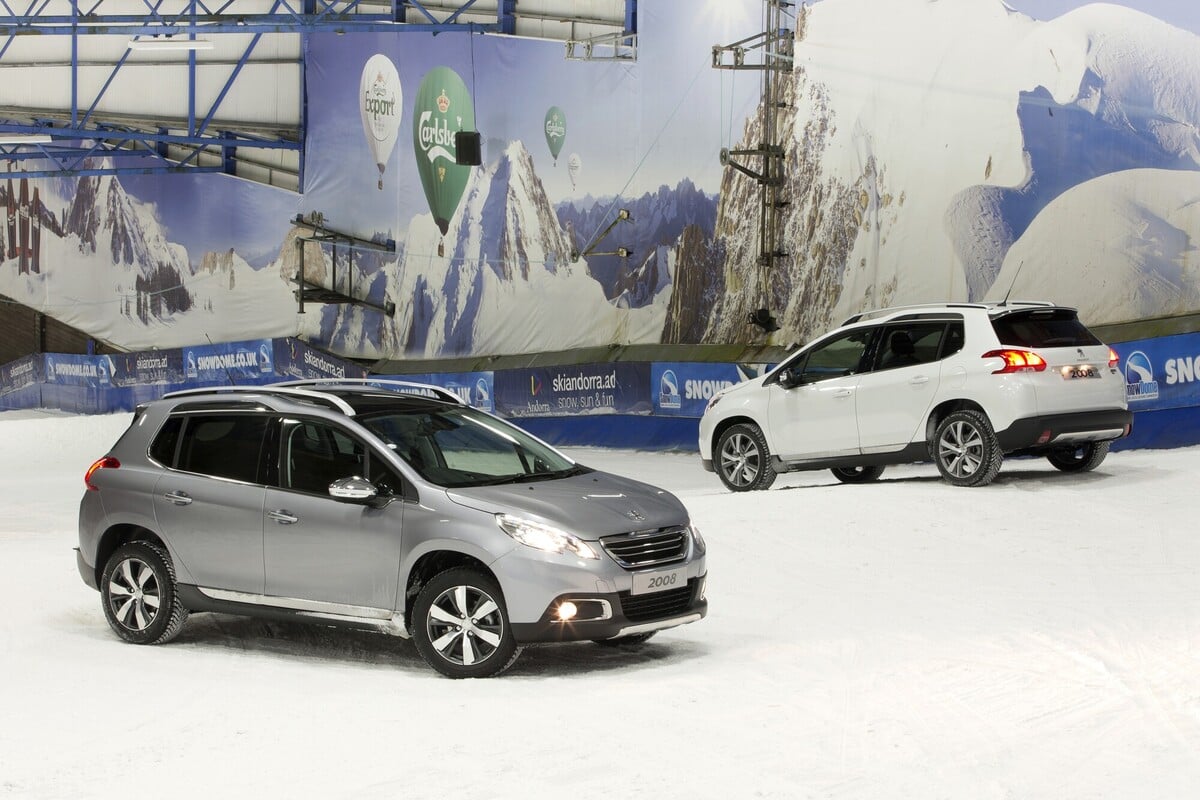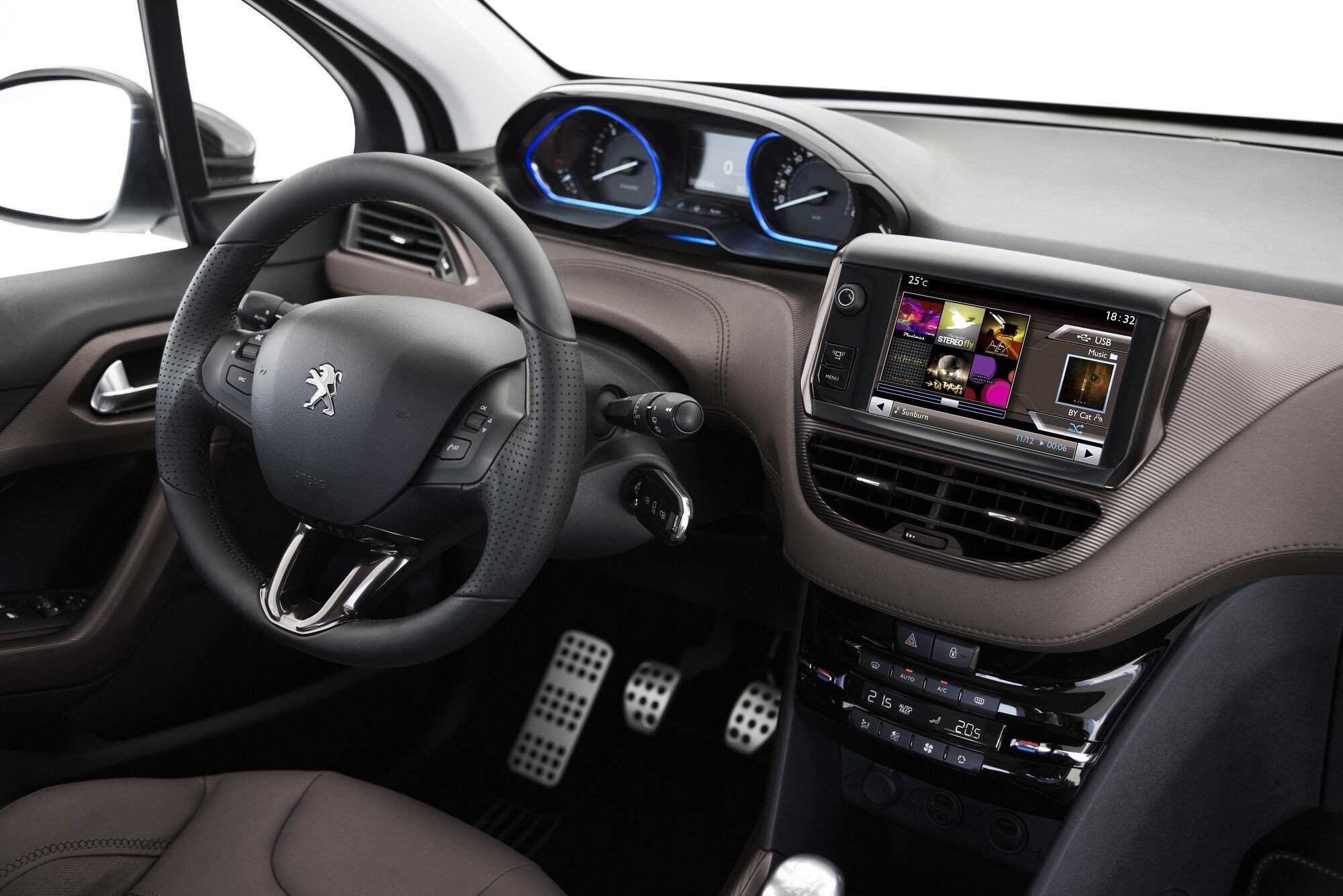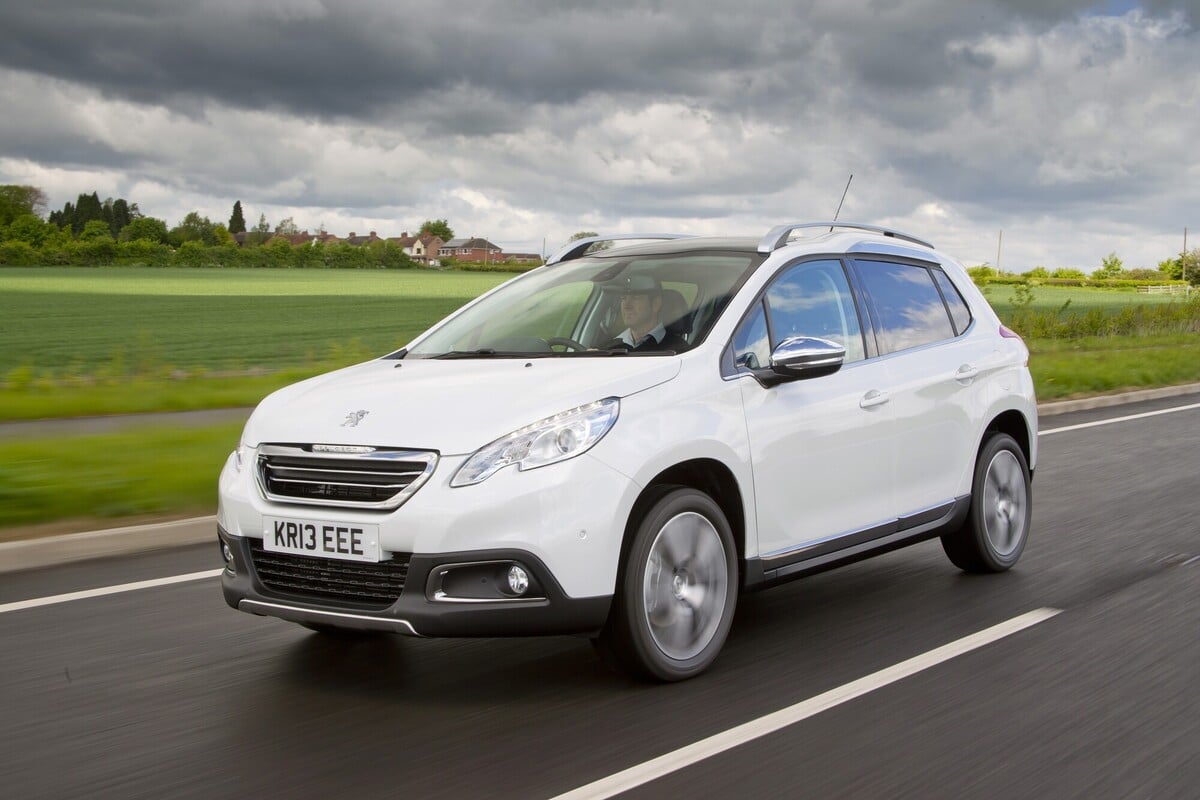
SALE – up to 40% off*
Roadside & Recovery from £5.29 a month*
• Cheaper than AA Price Promise or we’ll beat by 20%^
• We get to most breakdowns in 60 mins or less
• Our patrols fix 4/5 breakdowns on the spot

The Peugeot 2008 is a good value compact SUV with style and decent practicality on its side. But is it a worthwhile used purchase in a crowded sector? Lawrence Allan takes an in-depth look in this review.
Things you'll like
- Decent ride and handling
- Strong diesels and PureTech petrols
- Good value for money
Things to consider
- Early petrols aren’t great
- ETG and EGC autos are best avoided
- Driving position won’t suit all
History: What is the 2013-2016 Peugeot 2008?
Small, road-biased SUVs are part of the furniture nowadays, but wind the clock back to 2012 and the bodystyle was in its infancy.
The Nissan Juke had been around for a couple of years by this point, but while there was a smattering of semi-popular alternatives (the Kia Soul and the MINI Countryman spring to mind) many mainstream brands hadn’t yet cracked the formula.
But through the end of 2012 and into 2013 an explosion of supermini-based SUVs (or small crossovers as they’re otherwise known) arrived onto the scene. There was the Vauxhall Mokka, the Renault Captur, the Ford EcoSport and this, the Peugeot 2008 – all of which quickly climbed up the sales charts.
In Peugeot’s case, its small SUV was a simple recipe: take the 208 supermini, give it a chunkier, taller body, increase the ride height, charge a bit more and you have the 2008. It indirectly replaced the now-extinct small estate car with the 207 SW.
The Peugeot 2008 found plenty of appeal with everyone from young families needing more space than a 208 can offer to older drivers wanting something with a raised seating position for easy access. But is it a wise buy on the used market? We’ll find out in this review.
Verdict: is the Peugeot 2008 a good car?
The Peugeot 2008 is well worth a look if you’re after an affordable and comfortable used small SUV with style, plenty of standard kit and a classier cabin than many alternatives. Sure, it’s not thrilling to drive, the earlier petrols are lacklustre and there are more spacious offerings, but you can’t argue with the sheer value for money on offer.
Specs and used pricing
As was common before the days of range streamlining the 2008 was available with a variety of engines and trim levels throughout its life, although there are some worth avoiding today.
Even the entry-level Access model isn’t overly sparse, with air-con, electric front windows, driver’s seat height adjustment and cruise control as standard. Nevertheless, the most desirable trims start from Active spec, bringing the all-important alloy wheels and seven-inch touchscreen along with DAB radio and Bluetooth.

Moving up to Allure trim brings the kind of kit level you’d expect from a newer car, such as 17-inch alloys, dual-zone climate control, rear parking sensors, rear electric windows and height adjustment for the passenger seat. Feline spec is quite rare as it was expensive when new, but does bring luxuries such as leather seats, sat-nav and a panoramic glass roof.
The two higher spec trims paired with higher output petrol or diesel engines came with something called Grip Control. This isn’t four-wheel drive (no 2008 came thus equipped) but it is a sophisticated traction control system and electronic differential that aims to keep the front wheels powering the car on a variety of tough surfaces such as sand, mud and snow. You’ll spot a Grip Control-equipped 2008 with a five-mode rotary dial next to the gearshift.
You’ll find higher mileage and/or lower spec examples of the 2008 from under £2,500, making it a thoroughly decent amount of car for the money.
Stepping up to £3,500 brings a choice of tidier, lower-mileage examples with decent spec, along with the option of the 1.2-litre PureTech turbo petrol engine. £5,000 will net you a well looked-after 2015-on model, and the cleanest, lowest-mileage 2016 examples fetch up to £6,000.
Rivals
There’s no doubt you’ll be considering the ubiquitous Nissan Juke as an alternative for the Peugeot 2008, but there are plenty of other alternatives to consider. Fellow French maker Renault has the Captur, while the Ford EcoSport, Vauxhall Mokka, Kia Soul and MINI Countryman are all worthy alternatives available from similar money.
Interior and practicality
Following the 208, the 2008 was among the first Peugeots to adopt the brand’s now staple ‘i-Cockpit’ dash layout. Basically, you get a much smaller steering wheel than the norm, mounted lower so you look at the dials over the wheel rather than through it.
It’s a novel idea and certainly gives the 2008 a unique personality compared to rivals, but it won’t suit everyone. Tall drivers may find that, in order to position the steering wheel in a comfortable position away from their knees, the instruments are obscured by the top of the wheel. Pedals that are placed quite close to the driver’s seat don’t help matters.
Those of average size should find a comfortable driving position, however, with comfortable yet supportive seats and a decent view out – though the lack of a central armrest isn’t ideal. Elsewhere, the 2008’s interior is a classy affair with higher quality materials than the Renault Captur and Nissan Juke of the time.
The seven-inch touchscreen offered in Active trim or above looked modern at the time and is mounted within the driver’s line of sight. Like most decade-old systems it’s quite dated in its sluggish responses and fiddly menus, but because of its position it’s not too hard to fit a newer aftermarket screen in its place.

Passenger space, storage and boot space
There’s a useful amount of extra cabin and boot space in the 2008 when compared with the 208 – it’s not hard to see why small SUVs such as this became popular.
There’s plenty of room up front, with headroom in particular a highlight even with the panoramic glass roof fitted. The rear seats are only acceptable - roomier than the 208 supermini and the Nissan Juke, but they fall behind rivals like the Renault Captur with its extra legroom and sliding rear bench.
Storage is okay, with a large lidded central cubby and decent-sized door bins, but the glovebox isn’t much use for anything except the owner’s manual.
The 360-litre boot is more impressive, with a large tailgate opening, low load lip and easy folding seats making it a practical space. We also like the stainless-steel boot protector and chromed rails to make it easy to slide items through.
What is a used Peugeot 2008 like to drive?
Peugeot has struck a good balance with the 2008 with the ride and handling, managing to build a small SUV that has a decent sense of agility while also maintaining a comfortable ride. A kerbweight of not much over a tonne for the lightest versions helps a lot here.
We’d stop well short of calling it fun, and the smaller, lighter 208 is more composed. But with its small, direct-feeling steering wheel and decent grip you can place it on the road with confidence. Body roll is noticeable, so a Nissan Juke is a sharper steer, but the 2008 isn’t bad.
It also rides significantly better than Juke. As with most cars avoiding the largest alloy wheel options helps take the edge of sharp potholes, but all 2008s ride low-speed bumps well without feeling bouncy or floaty on faster roads. Wind noise is quite prominent, however.
Is the 2008 an off-roader? No, it isn’t. But it makes more of an effort in this arena than many alternatives when the Grip Control system is fitted. Best combined with the factory-fit Mud and Snow tyres, it won’t be capable of following a Land Rover off the beaten track, but it will deal with muddy car parks and wintry weather better than many alternatives.
Engines
You’ll likely find the sheer number of different engines offered in the 2008 overwhelming, so allow us to run you through the range.
Early models were offered with two non-turbocharged petrol engines and three turbodiesel options. The 1.2 VTi is a three-cylinder which, with no turbo to help it along, develops a modest 82hp and 118Nm of torque.
It’ll serve you fine if all you’re doing is pottering about town, with low running costs key to its appeal. But while in the smaller 208 it doesn’t feel too underpowered, in the 2008 it struggles to shift the extra bulk and needs revving just to keep up with the flow of traffic.
The 120hp 1.6 VTi might seem a lot more like it on paper, but it’s not a great unit either. Again, without a turbo, it’s an engine that was advancing in age by the time it made it to the 2008, and even with 160Nm of torque it needs working and is quite noisy when you do so. Again, it’ll suffice if you’re on a budget but isn’t particularly efficient.

We’re much bigger fans of the 1.2-litre three-cylinder PureTech engines launched in 2014. With 110hp and 205Nm of torque, or 130hp and 230Nm of torque from a gutsy 1750rpm, they give the 2008 a much more eager turn of pace and the ability to effortlessly keep up with traffic. They even sound pretty good, while also being more economical than the old 1.6. Just be wary of potential timing belt problems (below).
As for the diesels? Well, while they might not be fashionable today they certainly were a decade ago – you’ll find more diesels than petrols on the second-hand market. We’d avoid the 1.4 HDI with its puny 70hp output and vague five-speed manual gearbox, even though it doesn’t feel quite as gutless as its 14.4-second 0-62mph time suggests.
The two 1.6-litre HDI diesels, with 94hp and 118hp, are much more like it. The latter has a muscular 270Nm of torque, plus a six-speed manual gearbox, and feels well up to the job of transporting a full load of passengers and luggage, but both are efficient and decently punchy.
Engines with six-speed manuals had a better shift action than the five-speeds, but we’d steer well clear of ‘ETG’ and ‘EGC’ automatic 2008s. This was a five-speed automated manual, with clunky and sluggish changes that had a considerable impact on performance. The 1.6 VTi came with a conventional auto which was better, but still a bit languid.
Ownership, running costs and reliability
Part of the reason why the supermini-based SUV sector became so popular is because they offered small car running costs in a chunky body. The 2008 was no different, particularly in diesel form.
All HDI diesels promise over 70mpg combined regardless of their output, although these official figures use the old, less realistic NEDC testing standard. CO2 emissions below 110g/km for all also mean road tax is just £20 a year.
That’s good, although a Renault Captur 1.5 dCi does even better in tests, and has CO2 emissions below 100g/km for the magical free road tax.
Meanwhile, the early petrols were no more than acceptably efficient. The 57.6mpg figure for the 1.2 VTi seems good on paper, but the need to work it hard out of town will impact this. The 1.6-litre petrol only managed 47.9mpg in NEDC tests, or a lacklustre 43.5mpg in auto form.
The PureTech turbo petrols are much better. Lower-powered variants managed over 60mpg in official tests, with even the 130hp version promising up to 58.9mpg.
That’s all well and good, but if you’re buying a PureTech model it’s well worth brushing up on this car’s timing belt issues. The belt runs inside the engine in the engine oil (known as a wet belt) and it’s widely reported that the belt rubbed can deteriorate and crack prematurely.
While it’s likely that many cars will have had new belts by now, it’s absolutely essential that any PureTech-equipped 2008 has a spotless service history with annual oil changes and a cambelt changed before the interval – this helps reduce the likelihood of the belt breaking and causing expensive bills.
With the diesels, check the car has done plenty of longer journeys (if possible) to ensure the diesel particulate filter has been self-cleaned and isn’t clogged up. As with any family car check for scuffs, scrapes, interior damage and funny smells, too, while make sure there are no outstanding recalls by using the DVSA’s online recall service.
Finally, make sure any used Peugeot 2008 claiming to have a full service history actually does so, make sure all the electrics function as they should, check the brake pads and discs for excessive wear and ensure the battery has enough charge for multiple engine starts.
Euro NCAP: is a used Peugeot 2008 a safe car?
The 2008 was considered very safe by the standards of the day, achieving the maximum five-star Euro NCAP rating when it was tested in 2013 with good (but not outstanding) overall category scores.
While that rating can’t be compared to today’s new cars as it’s from the old, less strict testing regime, it compares well with the four-star Ford EcoSport. The Vauxhall Mokka, Renault Captur and Nissan Juke all had five-star ratings, too, though, so all are a safe option for carrying your loved ones.
Although this 2008 predates the widespread fitment of kit such as automatic emergency braking and lane keep assist, all versions come with traction and stability control along with six airbags. An option was a (now commonplace) emergency call function that activated when the airbags deployed and informed the emergency services of the car’s location.
Peugeot 2008 FAQs
Is the Peugeot 2008 a good car?
We reckon the Peugeot 2008 is a pretty good choice of used small SUV, particularly as you get plenty of standard equipment, decent ride comfort and low running costs.
What is the road tax on the Peugeot 2008?
Diesel versions of the Peugeot 2008 pay just £20 a year for road tax other than the automatic e-HDI 92, which makes it into the free road tax band. The petrols range from £20 a year tax for the 1.2 Puretech models up to £190 a year for the 1.6 VTi auto.
What’s the difference between the Peugeot 2008 Active and Allure?
Allure trim is a higher spec level than Active trim, bringing equipment such as rear parking sensors, 17-inch alloy wheels and dual-zone climate control that the Active model doesn’t have.












